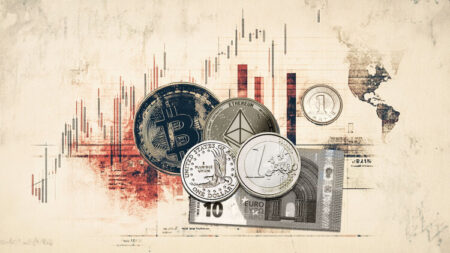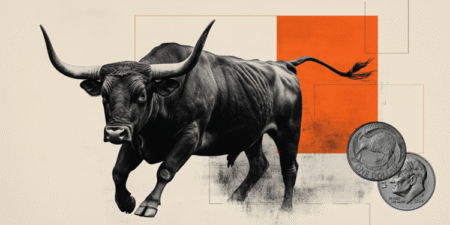The Indian Rupee (INR) remains inside the two-week-long range of 88.76-89.11 against the US Dollar (USD) on Thursday. The struggle for the USD/INR pair to extend its upside above the all-time high of 89.11 continues as the Reserve Bank of India (RBI) keeps intervening in currency markets to defend the Indian Rupee.
The Indian currency has been trading in a narrow range near all-time lows, with the RBI’s persistent dollar sales helping to anchor volatility. Bankers expect the central bank to continue smoothing moves, Reuters reported.
However, investors brace for significant volatility in the Indian Rupee when the RBI rolls back its support.
The Indian Rupee has remained on the back foot as the competitiveness of Indian products in global markets diminished due to higher tariffs on imports from India to the United States (US). Washington is charging a 50% import duty on products from New Delhi as a penalty for buying oil from Russia.
Meanwhile, Commerce and Industry Minister Piyush Goyal expressed confidence, while responding to reporters on Tuesday during his visit to Qatar, that his team is in constant dialogue with negotiators from Washington and both nations would reach a trade agreement within the November deadline, as reported by ANI News. Goyal added that the next round of trade talks has not been scheduled yet as the US government is in a shutdown mode.
On the foreign investment flow front, overseas investors turned out to be net buyers in the Indian stock market for the second consecutive day on Wednesday. However, the size of investment was small as Foreign Institutional Investors (FIIs) pumped Rs. 81.28 crores into the Indian equity markets.
The table below shows the percentage change of Indian Rupee (INR) against listed major currencies today. Indian Rupee was the strongest against the US Dollar.
| USD | EUR | GBP | JPY | CAD | AUD | INR | CHF | |
|---|---|---|---|---|---|---|---|---|
| USD | -0.10% | -0.04% | -0.08% | -0.11% | -0.43% | 0.03% | -0.02% | |
| EUR | 0.10% | 0.06% | 0.07% | -0.03% | -0.19% | 0.19% | -0.04% | |
| GBP | 0.04% | -0.06% | -0.06% | -0.06% | -0.26% | 0.06% | -0.06% | |
| JPY | 0.08% | -0.07% | 0.06% | -0.11% | -0.25% | 0.13% | 0.00% | |
| CAD | 0.11% | 0.03% | 0.06% | 0.11% | -0.24% | 0.19% | -0.04% | |
| AUD | 0.43% | 0.19% | 0.26% | 0.25% | 0.24% | 0.43% | 0.17% | |
| INR | -0.03% | -0.19% | -0.06% | -0.13% | -0.19% | -0.43% | -0.09% | |
| CHF | 0.02% | 0.04% | 0.06% | -0.01% | 0.04% | -0.17% | 0.09% |
The heat map shows percentage changes of major currencies against each other. The base currency is picked from the left column, while the quote currency is picked from the top row. For example, if you pick the Indian Rupee from the left column and move along the horizontal line to the US Dollar, the percentage change displayed in the box will represent INR (base)/USD (quote).
Daily digest market movers: US Dollar recovers its early losses
- The USD/INR pair remains in a tight range, even as the US Dollar has clawed back its early losses. At the time of writing, the US Dollar Index (DXY), which tracks the Greenback’s value against six major currencies, recovers its intraday losses and revisits the two-month high of 99.00 posted on Wednesday. The USD Index is performing strongly as its safe-haven demand has increased, following recent political developments in Japan and France.
- The US Dollar faced a slight selling pressure as dovish Federal Open Market Committee (FOMC) minutes from the September policy meeting and the ongoing US government shutdown are a major drag.
- The FOMC minutes showed on Wednesday that a majority of members signaled that it is appropriate for the Fed to pivot to neutral rates as “downside risks to employment to have increased, while upside risks to inflation had either diminished or not increased”. The minutes also showed that almost all participants voted for a 25 basis points (bps) interest rate reduction, while one favoured a bigger size cut.
- According to the CME FedWatch tool, traders remain extremely confident that the Fed will cut interest rates again at the policy meeting later this month, with a 78.6% chance of another rate cut in the December meeting.
- For more cues on the US interest rate outlook, investors await the speech from Fed Chair Jerome Powell at the Community Bank Conference in Washington, which is scheduled for 12:30 GMT.
- Meanwhile, the ongoing US government shutdown is weighing on the economic outlook amid fears that the White House would be forced to cut programs and announce layoffs in federal agencies. On Tuesday, US President Donald Trump announced that the White House could eliminate a string of government programs amid the ongoing government shutdown and would provide details on lay-offs in the next four to five days.
- Going forward, investors will focus on the preliminary Michigan Consumer Sentiment Index and Consumer Inflation Expectations data for October, which is scheduled for Friday.
Technical Analysis: USD/INR stays in tight range from over two weeks
USD/INR continues to trade in a tight range between 88.76 and 89.11 for over two weeks. The near-term trend of the pair remains bullish as the 20-day Exponential Moving Average (EMA) continues to slope higher around 88.67.
The 14-day Relative Strength Index (RSI) stays above 60.00, suggesting a strong bullish momentum.
Looking down, the pair could slide to near the September 12 high of 88.57 and the 20-day EMA, if it breaks below the September 25 low of 88.76.
On the upside, the pair could extend its rally towards the round figure of 90.00 if it breaks above the current all-time high of 89.12.
Fed FAQs
Monetary policy in the US is shaped by the Federal Reserve (Fed). The Fed has two mandates: to achieve price stability and foster full employment. Its primary tool to achieve these goals is by adjusting interest rates.
When prices are rising too quickly and inflation is above the Fed’s 2% target, it raises interest rates, increasing borrowing costs throughout the economy. This results in a stronger US Dollar (USD) as it makes the US a more attractive place for international investors to park their money.
When inflation falls below 2% or the Unemployment Rate is too high, the Fed may lower interest rates to encourage borrowing, which weighs on the Greenback.
The Federal Reserve (Fed) holds eight policy meetings a year, where the Federal Open Market Committee (FOMC) assesses economic conditions and makes monetary policy decisions.
The FOMC is attended by twelve Fed officials – the seven members of the Board of Governors, the president of the Federal Reserve Bank of New York, and four of the remaining eleven regional Reserve Bank presidents, who serve one-year terms on a rotating basis.
In extreme situations, the Federal Reserve may resort to a policy named Quantitative Easing (QE). QE is the process by which the Fed substantially increases the flow of credit in a stuck financial system.
It is a non-standard policy measure used during crises or when inflation is extremely low. It was the Fed’s weapon of choice during the Great Financial Crisis in 2008. It involves the Fed printing more Dollars and using them to buy high grade bonds from financial institutions. QE usually weakens the US Dollar.
Quantitative tightening (QT) is the reverse process of QE, whereby the Federal Reserve stops buying bonds from financial institutions and does not reinvest the principal from the bonds it holds maturing, to purchase new bonds. It is usually positive for the value of the US Dollar.
Read the full article here
















